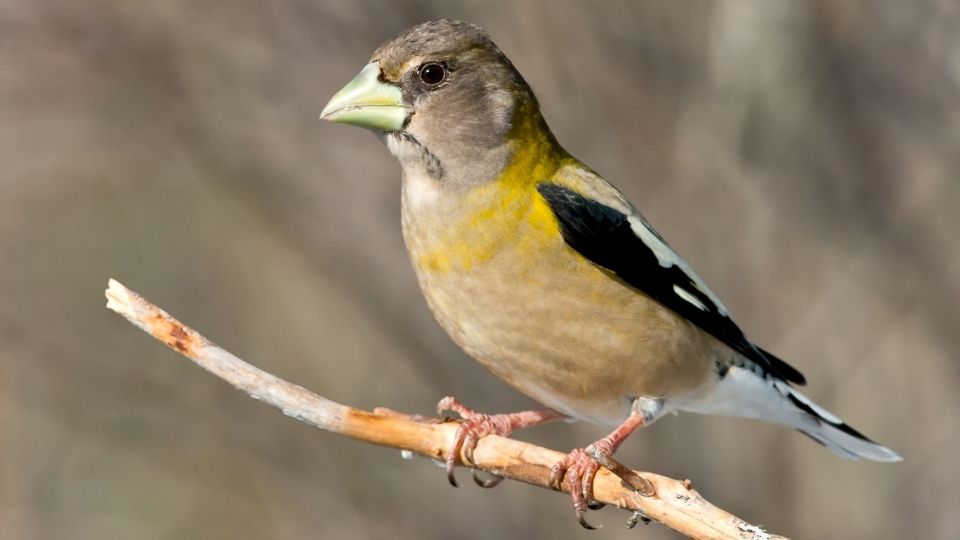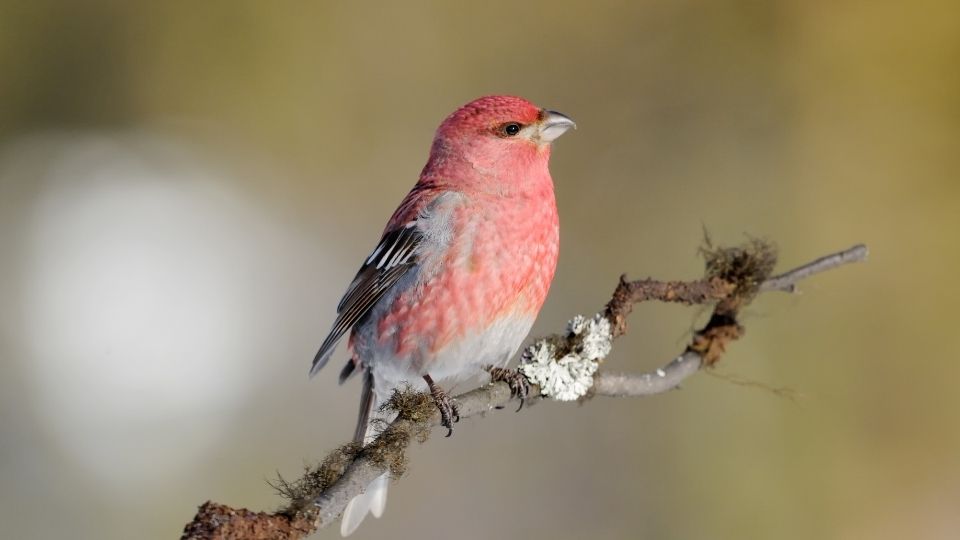There are 33 species in the superfamily of grosbeak birds, of which 7 can be found in North America. The grosbeak is a unique bird species that belongs to three different families including grosbeak finches, cardinal grosbeaks, and grosbeak tanagers.
Are you on the search for a Grosbeak in your area? With seven types of unique species of Grosbeaks peppered throughout North America, the odds are good that one will visit your backyard birdfeeders! For instance, the black-headed grosbeak is a member of the Cardinalidae family, while the evening grosbeak is a member of the Fringillidae family.
While mating rituals, behavior, diet, habitats, and even color vary for different species of Grosbeaks, they all have one thing in common: their large, conical bills. The word ‘Grosbeak’ derives from the French translation of Grosbec- Gros (large) bec (beak)!
The 7 Different Species of Grosbeaks, and Where to Find them
There are seven species of Grosbeaks in North America (and Central America), and they are wildly unique. Some Grosbeaks have bright yellow feathers similar to a Goldfinch, orange like an American Robin, while others are electric blue.

Rose-Breasted Grosbeak
The rose-breasted grosbeak boasts bright red coloring on its chest with a black head and white accents on its breast. It’s a colorful yet elusive bird on almost every birdwatcher’s bingo card! The red-breasted grosbeak is a long-distance migrant that travels as far as South America to its breeding grounds in the North East United States and parts of Canada. These stunning songbirds prefer the dense protection of deciduous or coniferous forests and are most commonly found on forest edges and in local parks. With a similar song to that of an American robin, the best way to track down a rose-breasted grosbeak is to listen for them first!
Black-Headed Grosbeak
The best way to spot a black-headed grosbeak is to head west to the Rocky Mountains of North America. They are known for their unique black caps and orange coloring, similar to an America robin. While male black-headed grosbeaks look identical to robins, they are much smaller with white spots on their wing bars. They prefer a protein-rich diet like snails, caterpillars, spiders, and other bugs during the breeding season. In the winter, they are attracted to sunflower seed offerings at nearby bird-feeders.

Evening Grosbeak
The evening grosbeak is a member of the finch family and shares a lot in common with the goldfinch. Male evening grosbeaks have bright yellow feathers, black accents, and large conical beaks, while females have similar patterns with much more muted colors. No matter where you live in North America, the odds of spotting an evening grosbeak are high. These cheery songbirds live to breed in conifer forests and spend non-breeding months peppered throughout North America from California to New York.
Pine Grosbeak
The pine grosbeak is even more similar to a goldfinch. As a member of the Fringillidae family, it has a small statue and delicate features. Male pine grosbeaks are accented with red and gray plumage on their heads and wing bars, while females boast a muted shade of rusty orange. To catch a glimpse of this songbird, you must head to cooler climates. These Passeriformes prefer breeding grounds rich in lush coniferous forests, primarily in Canada and as far north as Alaska. In non-breeding months, these short-distance migrant flock to areas in the Great Lakes and the Midwest states in search of berries.
Blue Grosbeak
The blue grosbeak is a widespread member of the grosbeak cardinal family, but sightings are rare. While its numbers continue to rise over the years, this shy songbird doesn’t like to make itself very known. The blue grosbeak has a bright electric blue plumage similar to an indigo bunting or a bluebird, and adult males possess bright blue underparts with black wings peppered with orange wing bars.
During the breeding season, birdwatchers can catch a glimpse of this bird in most parts of the southern United States, from California to Florida. These short-distance migrants pack up and head to their wintering grounds in Central America in the early parts of the summer in search of more wildly available food sources.
Crimson-Collared Grosbeak
The crimson-collared grosbeak has slightly similar coloring to the rose-breasted grosbeak, but it doesn’t frequent North America very often. It lives in a small part of eastern Mexico and doesn’t migrate. It makes its home at sea level and constricts loose nests in thickets and bushes not very high off the ground.
As a member of the Cardinal family, it shares a lot in common with the cold-weather-loving Northern cardinal. Crimson-collared grosbeaks have a similar conical bill and red and black wings to the Northern cardinal. It’s rare to spot this beautiful bird outside of Mexico, but some vagrants have been sighted at the southern tip of Texas.
Yellow Grosbeak
The yellow grosbeak is the only species of grosbeak that doesn’t frequent North America. They live in non-migratory populations in Central America, primarily on the west coast of Mexico. What’s interesting about the yellow grosbeak is that it’s the largest member of the grosbeak family (in size, not in numbers).
Their populations are small; although they aren’t endangered, they make up for smaller populations with their bulky frames. The average weight of a yellow grosbeak is 2.2 ounces. To put that into perspective, Northern cardinal (that is of a very similar color) weighs in at just 1.5 ounces.
How Can I Attract Grosbeaks?
If you want to attract grosbeaks, pick the right kind of seed and a bird-feeder to attract them to your backyard. Since grosbeaks are often larger than smaller songbirds (like finches or chiakdees), they perfect tray feeders over tube feeders.
Most species of Grosbeaks dine on things like sunflower seeds, cracked corn, and other small grains. In winter, suet feeders stocked with mealworm is a great option to keep their energy levels high. No matter where you reside in the US, the odds are high that one of the seven species of Grosbeaks will visit you!

